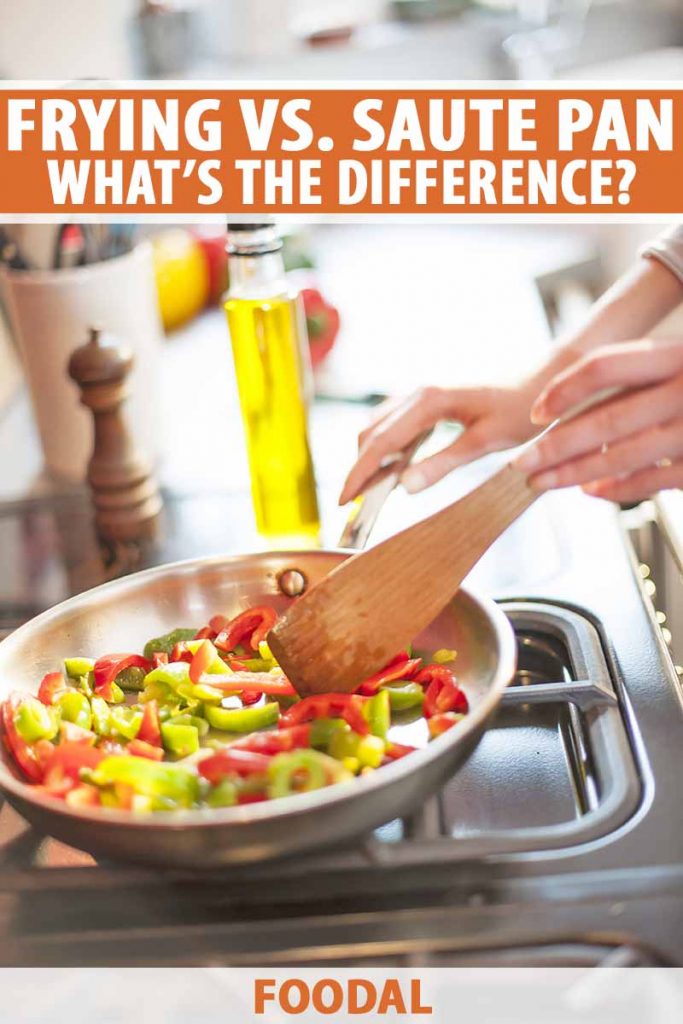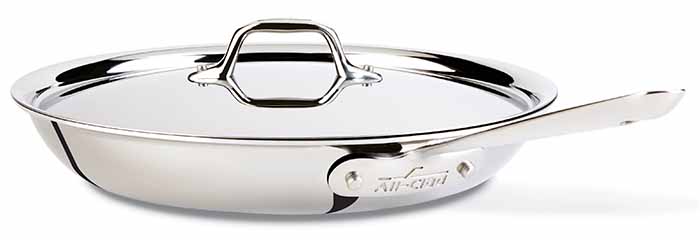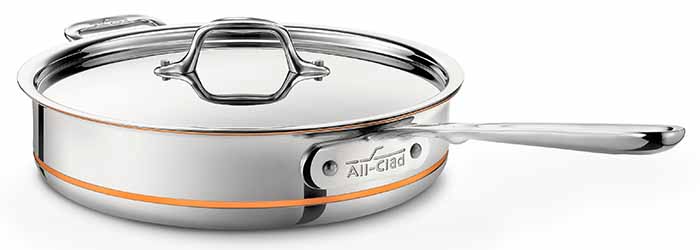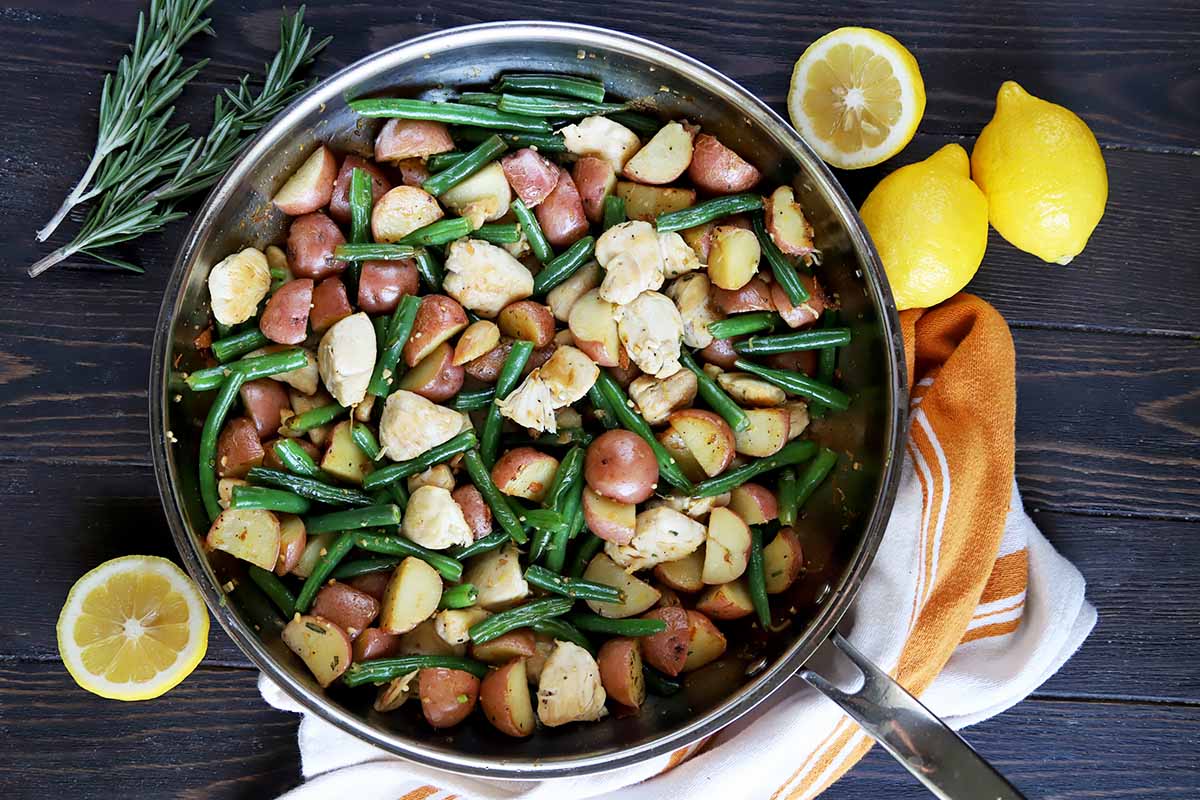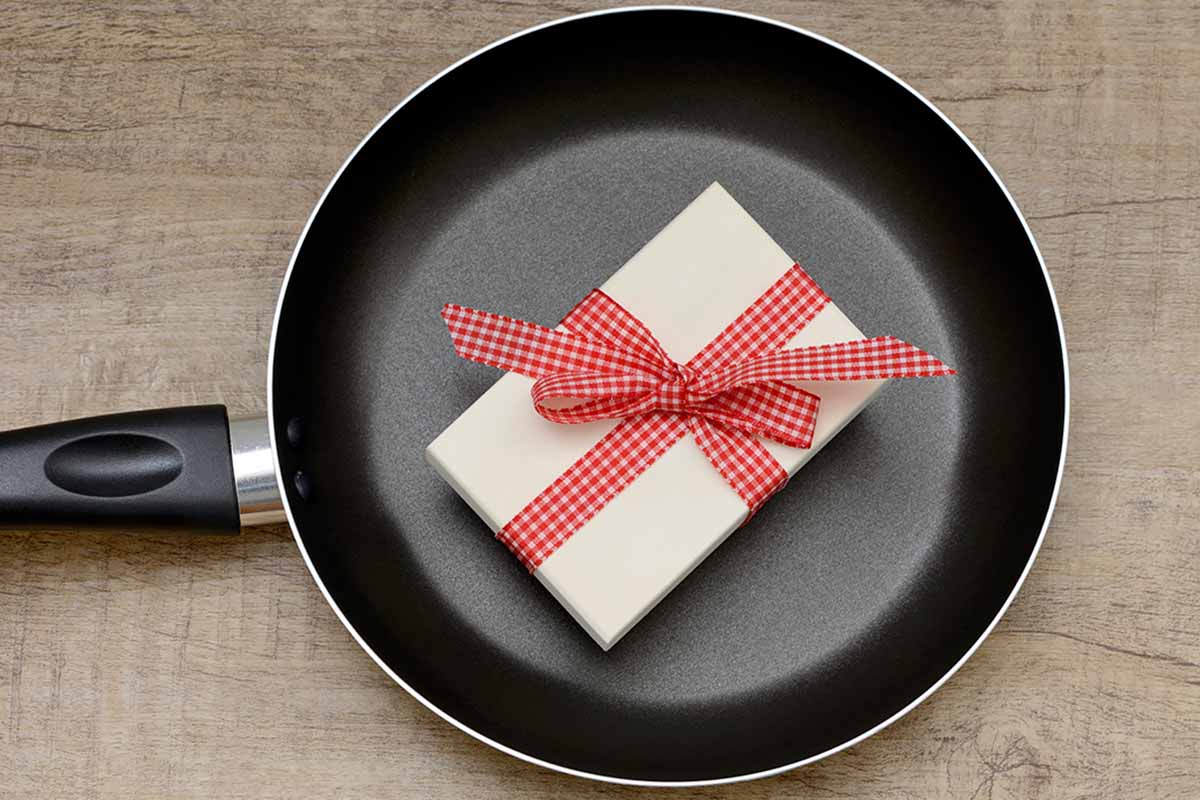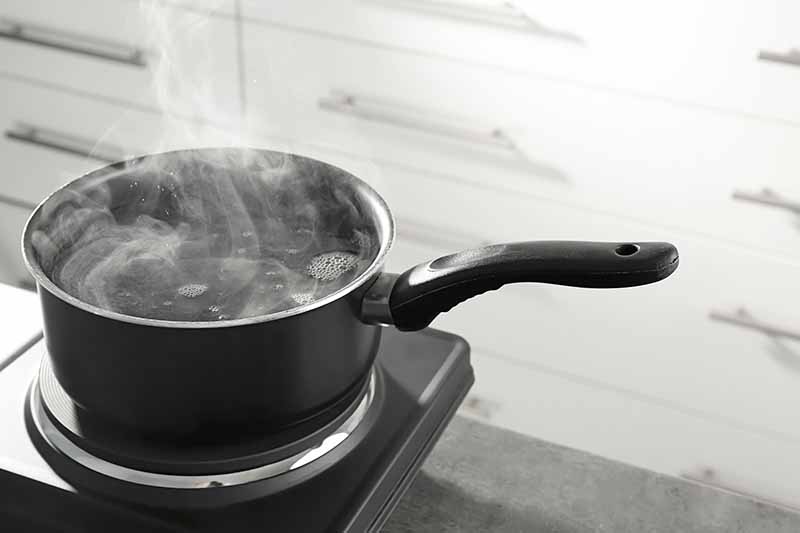We occasionally link to goods offered by vendors to help the reader find relevant products. Some of these may be affiliate based, meaning we earn small commissions (at no additional cost to you) if items are purchased. Here is more about what we do.
Right now, my stovetop cookware consists of six pieces. When cooking as a family these days, we don’t say sophisticated things like, “Can you get out the 2-quart saucepan?”
Instead, we refer to our pots as the egg, oatmeal, soup, or spaghetti one, and our pans as the little or big one. Most of the cookware is older than I am, so it’s not surprising that it’s wearing out.
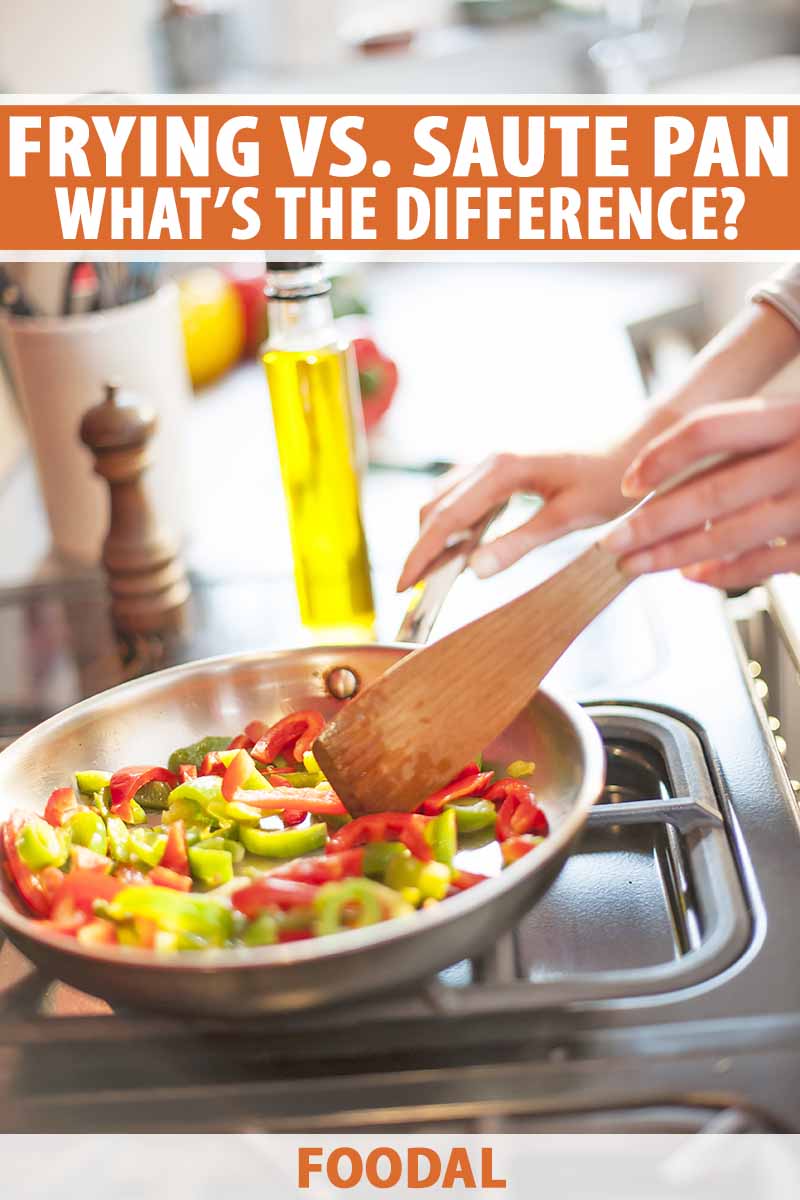
I recently started shopping for new pieces to replace my hand-me-down treasures.
Read on to discover what I learned about fry and saute pans, their similarities and differences, and whether or not both are cookware essentials.
What You’ll Learn
Let’s head to the kitchen!
Frying Basics
When we fry, we coat the bottom of the cookware generously with oil and use a high heat setting for cooking foods fast and making them crisp. It is also possible to fry in a nonstick vessel using no oil.
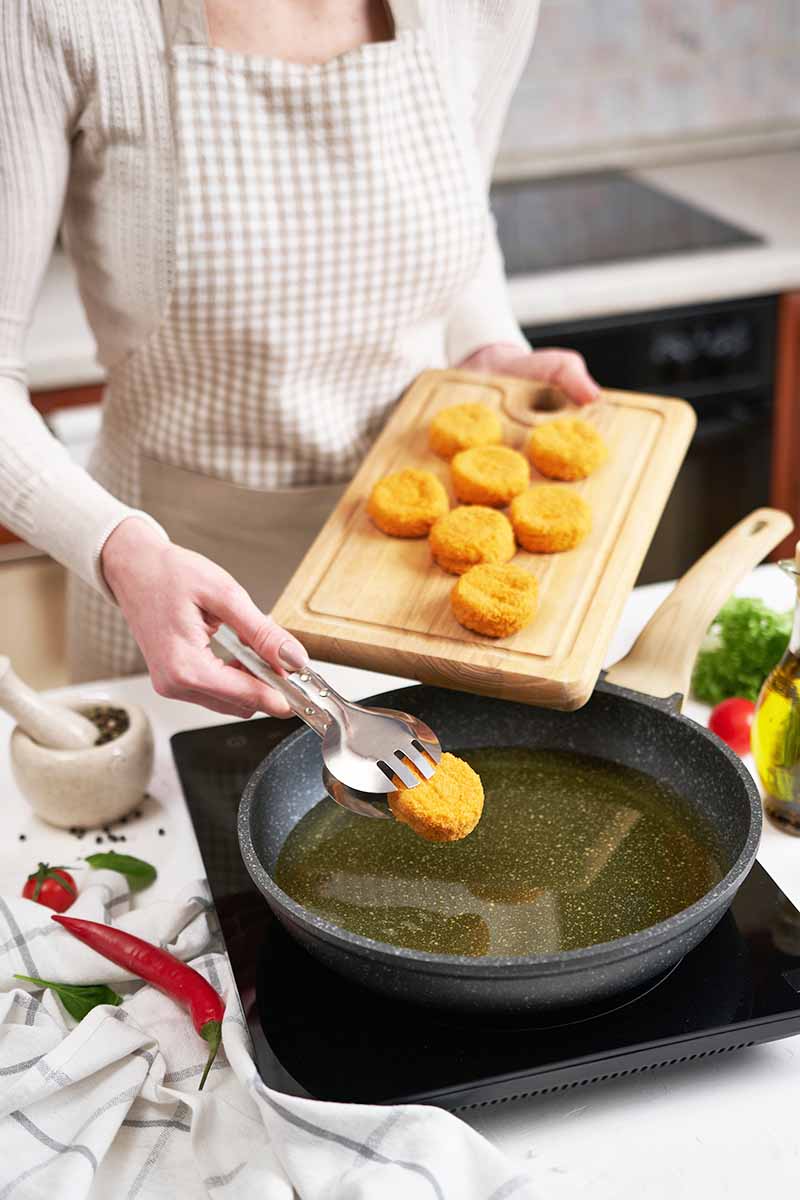
Deep frying uses enough oil to submerge foods entirely and eliminates the need to turn them.
A fry pan is also called a skillet, a name once reserved for cast iron cookware. We will use the two words interchangeably here.
Standard sizes are eight, 10, and 12 inches and approximately two to three inches deep. You may also find some as small as seven inches across or as large as fourteen inches in diameter.

Features include sloped sides, a bottom diameter smaller than the top, a long handle, and sometimes one or two pouring spouts. These do not usually come with a fitted lid.
A skillet accommodates shallow oil, but you’ll need a deeper vessel to hold enough oil for submerging food.
And while we equate the skillet with fried foods, it’s also great for:
- Browning and searing
- Making gravy and sauces
- Sauteing
Here is a product to consider:
All-Clad D3™ Stainless Frying Pan with Lid, from Wayfair
Suited to all cooktops, this gleaming 12-inch piece of cookware has a three-ply stainless steel interior and exterior with an aluminum core. It’s oven-safe to 600°F. And unlike many options, this one comes with a fitted lid.
The All-Clad D3™ Stainless Frying Pan with Lid is available via Wayfair.
The Fundamentals of Sauteing
The word “sauté” is a French ballet term that means to jump, and it is an apt description of the cooking process by the same name that uses medium-high heat, minimal oil, and constant motion to brown foods without overcooking them. In a nonstick vessel, there is no need for oil.
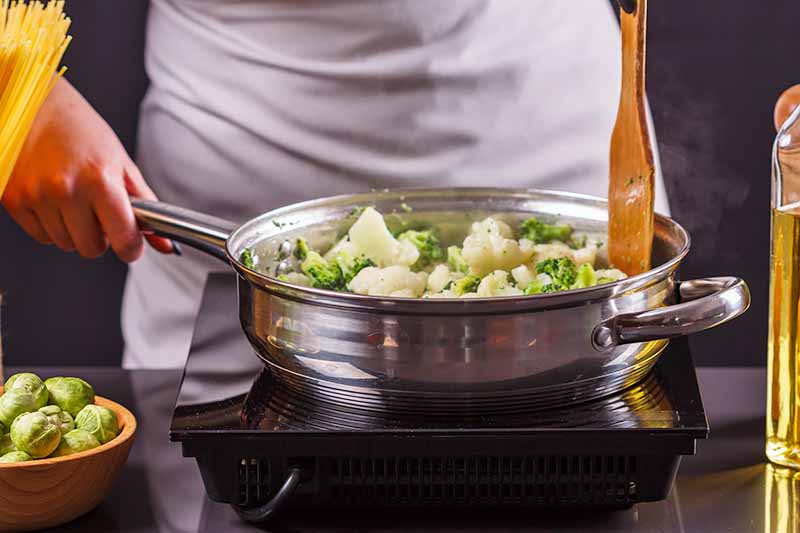
And now, for the ironic part.
It is better to saute in a skillet than in a saute pan.
Here’s why:
Sauteing requires keeping food in constant motion. A skillet’s sloped sides make this easy to do.
Saute cookware is not suited to lifting and tossing because it is generally rather heavy and does not have sloping sides. Instead, it has straight sides. The bottom diameter is as large as the top, providing greater volume capacity, a larger area of burner contact, and even heating for slow-cooked, liquid-rich foods.
Examples of slow cooking are:
- Braising
- Poaching
- Simmering
- Stewing
It is also a good choice for frying, stovetop roasting, and searing, especially of oven-finished foods.
Sizes range from a two-quart to seven-quart capacity, with a depth of approximately four inches.
All have a fitted lid, long handle, and additional small grip handle for easy, well-balanced lifting when full.
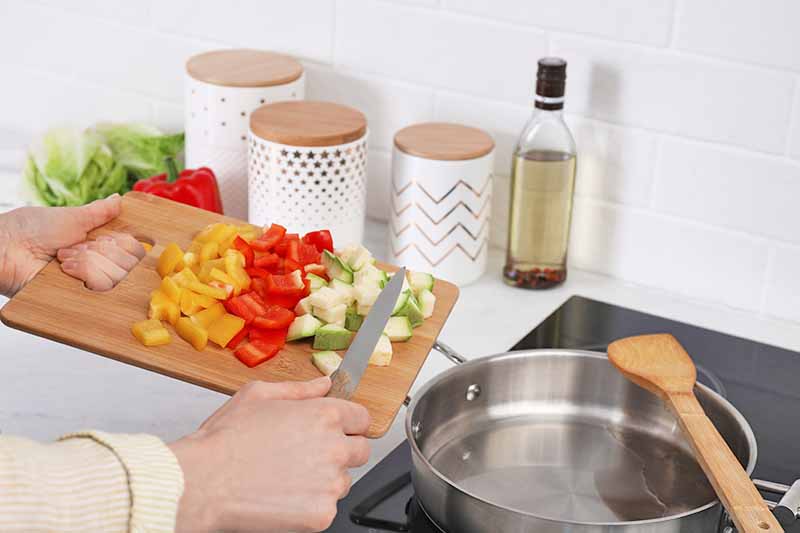
As you shop, you may be confused, as I was. Some products labeled “saute” have rounded sides and an interior base diameter smaller than the top rim diameters.
These stovetop vessels are great for flipping foods and cooking them fast, but the smaller diameter bottoms with less surface area for cooking and a sloping interior are not suited to slow cooking over even heat.
If you are looking for a classic saute vessel, make sure the sides are straight, not rounded, and the bottom diameter is the same as the top. These features ensure maximum surface area on the burner and even heating for slow-cooked foods.
Here’s one you may like:
All-Clad Copper Core® Saute Pan, available from Wayfair
The 5-quart All-Clad Copper Core® Saute Pan is a five-ply bonded composition of aluminum, stainless steel, and a dense copper core for optimal and even heat conduction and distribution.
It’s compatible with all cooktops and oven and broiler-safe to 600°F.
Features include a drip-free pouring edge, fitted lid, riveted handle, and small second handle. A visible stripe of the copper core accents this product’s brilliant stainless steel finish.
The All-Clad Copper Core® Saute Pan with Lid is available via Wayfair.
The Right Cookware for the Job
Shopping has been an education and my family now calls our ancient large pan “the saute,” and our little one “the fry.” We are too cool for school, but we still need new cookware.
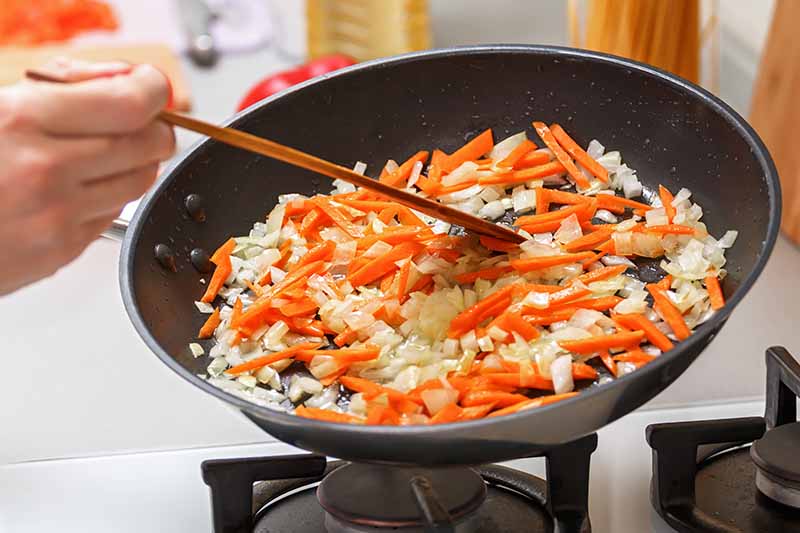
Does knowing the difference between the two matter all that much?
Yes, and here’s why:
If a recipe calls for an oven-safe saute pan, like our zesty Spanish chorizo and potato frittata, you’ll know to pull out the one with straight sides and heat-safe handles. The straight sides give structure and support to this classic egg dish.
And for a delicious asparagus and mozzarella omelet that calls for a skillet, you’ll know it’s because the sloped sides are essential for a spectacular slide-to-plate presentation.
And finally, knowing the difference makes for a knowledgeable shopping experience and a better investment in cookware that you’ll use for years and likely pass down to future generations of home chefs.
Tell us about your go-to cookware in the comments section below.
If you found this guide informative and want to learn more about stovetop cookware, we recommend the following:
- Choosing the Best Nonstick Cookware
- Cast Iron and Carbon Steel Skillets: Which Is Better for Your Home Kitchen?
- Foodal’s Guide to Choosing the Best Frying Pan or Skillet
© Ask the Experts, LLC. ALL RIGHTS RESERVED. See our TOS for more details. Product photos: Wayfair. Uncredited photos: Shutterstock.
About Nan Schiller
Nan Schiller is a writer from southeastern Pennsylvania. When she’s not in the garden, she’s in the kitchen preparing imaginative gluten- and dairy-free meals. With a background in business, writing, editing, and photography, Nan writes humorous and informative articles on gardening, food, parenting, and real estate topics. Having celiac disease has only served to inspire her to continue to explore creative ways to provide her family with nutritious locally-sourced food.

